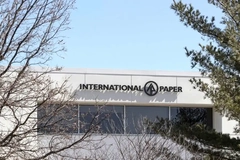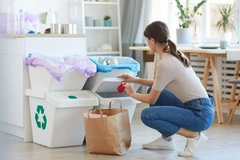European corrugated board manufacturers reveal “significant” CO2 savings in latest report

19 Jul 2022 --- Non profit industry organization the European Federation of Corrugated Board Manufacturers (FEFCO) is reporting that the CO2 footprint for corrugated board is now 491 kg CO2 equivalent (e/t), showing significant improvement compared to the 538 kg CO2e/t produced in its 2018 assessment.
This result reflects the continuous efforts made by the European corrugated industry and its paper suppliers to reduce their environmental impact. The data for the production of paper and board and conversion into corrugated boxes were sourced from the 2021 European Database for Corrugated Board Life Cycle Studies, organized by FEFCO and CCB (Cepi ContainerBoard).
The CO2 calculation methodology is based on CEPI’s (Confederation of the European Paper Industries) “Framework for Carbon Footprints for Paper and Board Products, April 2017” and the CITPA (International Confederation of Paper & Board Converters in Europe) “Guidelines for calculating carbon footprints for paper-based packaging, March 2018.”
Independent peer review
The CEPI and CITPA frameworks have been subject to an independent peer review by ifeu – the Institute for Energy and Environmental Research Heidelberg, Germany – and have been found to be compatible with the requirements of the “Product Life Cycle Accounting and Reporting Standard” of the Greenhouse Gas Protocol by the World Resources Institute.
 The drop in emissions is attributed to electricity purchasing, says FEFCO.The review is based on a renewable raw material and is the most recycled paper and board packaging. Recycled paper and board are used to make new corrugated packaging which on average has 88% recycling content.
The drop in emissions is attributed to electricity purchasing, says FEFCO.The review is based on a renewable raw material and is the most recycled paper and board packaging. Recycled paper and board are used to make new corrugated packaging which on average has 88% recycling content.
Recently, FEFCO and CEPI released a life cycle analysis (LCA), which included data collection covering a significant proportion of the sector, representing 84% of the total annual production for kraftliner and semi-chemical fluting and 74% of the production of testliner and recycled fluting, as well as 73% of the total annual corrugated board production in average.
One such aspect is the recycled material used to produce new corrugated packaging, indicating an average of 88% recycled content in 2021.
The report shows further improvements in environmental parameters, including an 18% reduction in consumption of wood, a 4% reduction in the consumption of recovered paper, indicating continuous improvements to reduce resource use, a 5% decrease in fossil fuels consumption, a 28% decrease in emissions of nitrous oxide at the production sites, and a 33% decrease in emissions of sulfur oxide at the production sites.
FEFCO and CCB say they are committed to continuing to provide LCA data in a transparent and consistent approach to support the evolution of the industry practices and the overall environmental performance of the sector, demonstrating the industry is aligned with the EU Green Deal.
The water link
Recently, we spoke to Paul Foulkes Arellano, a circularity educator at consultancy firm Circuthon, who said that despite the seeming progress made by the pulp and paper industry, decarbonization efforts are not the entire picture.
Water loss associated with pulp and paper production equates to roughly 54 cubic meters on average per metric ton of finished product. As industry rapidly moves away from virgin plastic, this could result in a serious global water crisis in the near future.
LCAs showing the decline in emissions do not necessarily represent the entire environmental impact, he stresses, and industry must therefore look to other alternatives such as agro-waste, which requires up to 99% less water, instead of relying on tree-based fibers.
By Louis Gore-Langton











